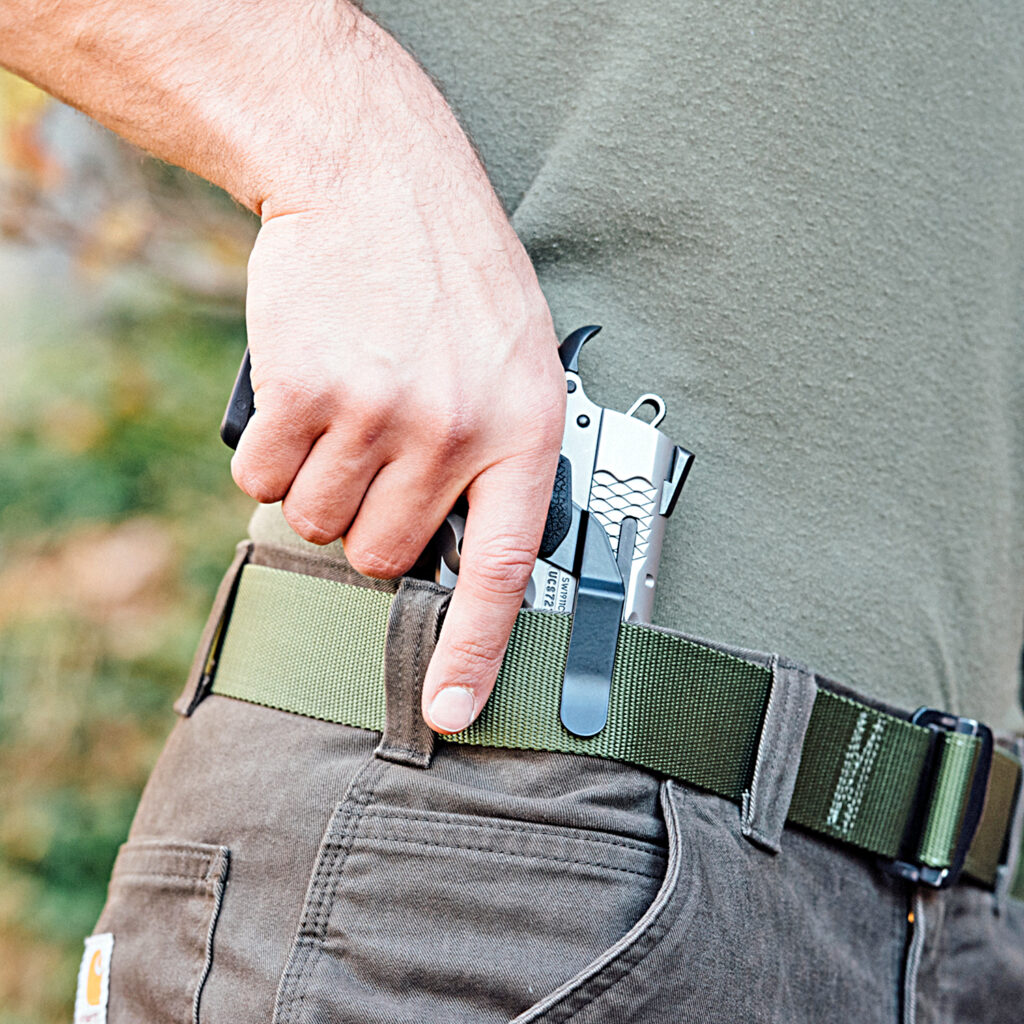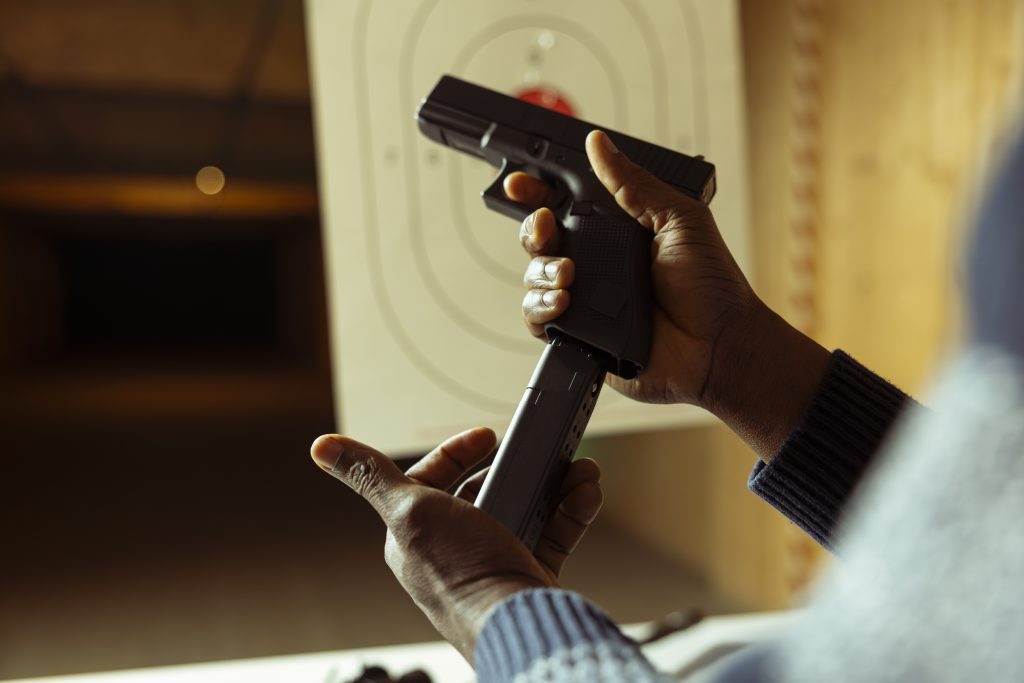Carrying a firearm is about protection, preparedness, and personal comfort. But when you’re used to open carry, moving to concealed carry can feel like learning to write with your non-dominant hand.
Why would someone even make that switch?
To begin with, concealed carry offers the advantage of maintaining a lower profile, which can be important in public settings. It provides the same level of personal protection while reducing the likelihood of drawing unnecessary attention. Additionally, many environments are not suitable for open carry due to local regulations, business policies, or individual preferences. Transitioning from open carry to concealed carry can provide greater flexibility and access in a wider range of situations.
Understanding Concealed Carry Legalities
Before making any changes to your carry method, it is important to understand the legal requirements that apply in your area. Laws related to carrying firearms can vary significantly from state to state and even between cities. What is permissible in one jurisdiction may be prohibited in another.
When transitioning from open carry to concealed carry, start by researching local and state regulations. Ensure you have the appropriate permits, understand where concealed carry is allowed, and review any duty-to-inform laws. In some states, for example, individuals must inform law enforcement that they are carrying a concealed firearm during any official interaction.
Never make assumptions. Legal compliance should always be a top priority.
Shifting Your Mental Approach
Transitioning from open carry to concealed carry requires more than just a change in equipment and accessories. It involves a shift in mindset. While open carry presents a visible deterrent, concealed carry emphasizes discretion and strategic readiness.
This change calls for a more defensive and situationally aware approach. The goal is not to make your preparedness known, but rather to remain protected without drawing attention. Concealed carry is about staying alert, remaining composed, and being prepared to act without being noticed.
Concealed Carry Essentials
Equipping yourself with the right tools is essential for a smooth and practical transition to concealed carry.
Minimalist Carry Options
Transitioning to concealed carry is an opportunity to streamline your gear. Clipdraw offers a minimalist solution for those who want secure firearm access without the bulk of traditional holsters. Our gun clips attach directly to the firearm, providing a slim profile that supports comfort and discretion throughout the day.
This approach minimizes the risk of printing (the outline or shape of a concealed firearm is visible through your clothing) while maintaining quick accessibility. Whether you are on the job or just going about your daily errands, Clipdraw integrates seamlessly into your routine.
Choosing the Right Firearm for Concealed Carry
Not all firearms used for open carry are practical for concealed carry. Larger handguns may be more difficult to conceal and less comfortable for long-term wear. Transitioning to concealed carry often involves selecting a compact or subcompact model.
Look for firearms with the following characteristics:
- A slim frame for easier concealment and to reduce printing.
- Rounded edges to reduce snagging on clothing.
- Lightweight construction for a more comfortable carry.
Many compact handguns still offer excellent accuracy and magazine capacity, making them suitable for your everyday concealed carry needs.
Developing and Refining Your Concealed Carry Techniques
Effectively concealed carry requires more than just the right gear. It also demands skill, awareness, and consistent practice.
Clothing and Concealment Tips
Adjusting your wardrobe is often necessary when shifting from open to concealed carry. Fortunately, this does not mean sacrificing personal style. Focus on practical layering and fit to maintain both comfort and concealment.
Consider the following clothing options:
- Looser shirts or untucked button-downs.
- Jackets with additional room.
- Pants with sturdy waistbands for reliable clip support.
When paired with Clipdraw’s low-profile design, even more fitted clothing can be effective with proper positioning.
Avoiding Printing and Staying Discreet
As we previously mentioned, printing occurs when the outline of a concealed firearm is visible through clothing. This undermines the purpose of concealed carry and may cause unnecessary concern in public spaces.
One effective way to reduce printing is by using a minimalist carry solution such as Clipdraw. Its slim design helps minimize the firearm’s imprint while allowing for a secure and high-ride carry. Positions such as appendix carry or high waistband placement often provide better concealment.
Regular practice with your concealed carry setup helps ensure that your firearm remains discreet yet accessible.
Daily Comfort and Accessibility
Comfort is a common concern when making the transition to concealed carry. Traditional holsters can shift, dig into the body, or cause discomfort during routine activities.
Clipdraw addresses these challenges by offering a minimalist, holster-free design. The clip attaches directly to the firearm, allowing for secure retention and greater freedom of movement. Whether seated at a desk, driving, or going about daily tasks, this concealed carry setup offers consistent comfort and reliability.
Training and Practice: Becoming a Responsible Concealed Carrier
Carrying concealed comes with a significant responsibility. Ongoing training is essential to ensure safe handling, effective response, and proper retention.
Recommended practices include:
- Dry fire training is a safe and highly effective method of practicing your shooting skills without using live ammunition. When it comes to concealed carry, dry fire training is especially important because it allows you to build muscle memory, refine your technique, and improve your confidence.
- Regular visits to the shooting range are important for anyone who carries a firearm for self-defense. For concealed carry in particular, range time helps ensure that you’re not only proficient with your firearm, but also prepared to use it responsibly, quickly, and accurately under pressure.
- Defensive shooting courses go beyond basic marksmanship. They’re often taught by certified instructors (often with law enforcement or military backgrounds) and are designed to simulate high-stress, real-world scenarios. These courses cover both the tactical and decision-making skills needed for concealed carry.
- Situational awareness exercises are one of the most critical yet often overlooked components of responsible concealed carry. While marksmanship and equipment matter, your ability to perceive, process, and react to your surroundings can prevent a dangerous situation from ever escalating and, in some cases, can save your life without ever needing to draw your firearm.
Effective concealed carry requires more than simply having the right equipment. It demands confidence, preparation, and a strong understanding of your responsibilities.
Why Clipdraw is the Ideal Fit for Your Concealed Carry Setup
Selecting the right concealed carry gear can be challenging. Clipdraw simplifies the process with a practical, low-profile solution. Our gun clips are designed for individuals seeking a streamlined, comfortable method of daily carry.
Key benefits include:
- Easy installation.
- Compatibility with many popular handgun models.
- Lightweight and durable materials.
- All-day comfort with minimal bulk.
Clipdraw also offers trigger guards and charging handles to enhance safety and customization. For those transitioning from open carry to concealed carry, Clipdraw provides an effective and uncomplicated solution that supports discretion and readiness.
From Visibility to Discretion
Making the switch from open carry to concealed carry represents both a tactical adjustment and a change in approach. It prioritizes discretion, preparedness, and compliance with legal and situational expectations.
With proper preparation, appropriate training, and the right gear, the transition can be both smooth and effective. Clipdraw is designed to support this process with solutions that eliminate unnecessary complexity while enhancing comfort and concealment.
If you are ready to begin transitioning from open carry to concealed carry, Clipdraw is here to help. Explore our collection of gun clips and accessories, built with a focus on functionality, simplicity, and daily practicality.


